


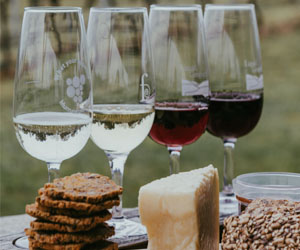
Our lives are filled with countless sensory experiences, from the taste of a delicious meal to the touch of a loved one's hand, the soothing sound of rainfall, and the vibrant colors of a breathtaking sunset. These experiences shape our perceptions, emotions, and memories, making the world around us a tapestry of sensory delights. In this article, we'll explore the richness of sensory experiences, how they affect our lives, and the importance of paying attention to them.
The Senses: The human sensory system is remarkably intricate, comprised of five primary senses: sight, hearing, touch, taste, and smell. Each sense is a gateway to a unique world of sensations and emotions, allowing us to perceive and interact with the environment in distinct ways.
Taste And Smell: The sense of taste and smell are closely intertwined, working together to create the flavors we savor in our favorite foods and beverages. These senses have the power to evoke powerful memories and emotions. The aroma of a homemade apple pie might transport you back to your grandmother's kitchen, while the taste of a particular wine could remind you of a special celebration.
Touch: Our sense of touch allows us to experience a wide range of sensations, from the warmth of sunlight on our skin to the comforting embrace of a loved one's hug. This sense plays a fundamental role in our connections with the world and the people in it.
Sight: Sight is often considered the dominant sense, and it's not hard to see why. The world is a visual symphony of colors, shapes, and patterns. Our sight helps us navigate the world, appreciate art and beauty, and communicate with one another through facial expressions and body language.
Hearing: The sense of hearing is a gateway to the auditory world, from the laughter of friends to the soothing sounds of nature. Music, in particular, has the power to evoke profound emotions and transport us to different times and places.
Emotional Impact: Sensory experiences have a profound emotional impact on our lives. They can make us feel joy, nostalgia, awe, or even a sense of tranquility. A simple scent or a familiar tune can trigger memories and emotions, creating a bridge between the past and the present.
Mindfulness And Sensory Awareness: In our fast-paced, technology-driven world, it's easy to become disconnected from our sensory experiences. We might eat a meal while checking our smartphones, listen to music with distractions all around, or rush through a scenic hike without truly appreciating the natural beauty. Mindfulness, or the practice of being fully present in the moment, can help us savor the richness of sensory experiences. By paying attention to each sense individually and as a whole, we can rekindle our connection with the world around us.
Enhancing Everyday Experiences: You don't need to embark on a grand adventure to enjoy sensory experiences. They can be found in the everyday moments, from sipping a cup of your favorite tea in the morning to watching the sunset in the evening. By embracing these moments, you can find joy and fulfillment in the simple things.
Sensory experiences are the threads that weave the tapestry of our lives, adding depth, color, and texture to our everyday existence. Embracing these experiences, paying attention to the world around us, and practicing mindfulness can lead to a more profound connection with our surroundings, our emotions, and the people we share our lives with. In this ever-evolving world, the ability to savor sensory experiences is a gift that enriches our lives and reminds us to be fully present in the moment.
Crafting Your Inner World
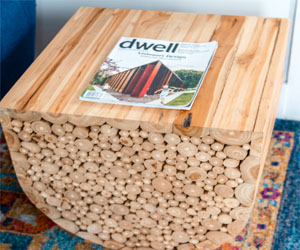 Creativity Unleashed: Woodworking provides a blank canvas on which you can paint your creativity. Whether you're crafting a meticulously designed piece of furniture, an ornate wooden sculpture, or a functional household item, every project is an opportunity for self-expression. The process of envisioning a project, selecting the wood, planning the design, and executing it involves making a series of artistic choices. These choices reflect your personal style, your interpretation of the world, and your emotions at the moment of creation.
Creativity Unleashed: Woodworking provides a blank canvas on which you can paint your creativity. Whether you're crafting a meticulously designed piece of furniture, an ornate wooden sculpture, or a functional household item, every project is an opportunity for self-expression. The process of envisioning a project, selecting the wood, planning the design, and executing it involves making a series of artistic choices. These choices reflect your personal style, your interpretation of the world, and your emotions at the moment of creation.
Emotional Release: For many woodworkers, the act of working with wood is a form of catharsis. The physicality of shaping and molding wood, combined with the rhythmic sounds of saws and the tactile feedback from the tools, can be a meditative and soothing experience. It's a way to release stress and express pent-up emotions. Some woodworkers even create pieces that embody their feelings, allowing them to externalize and share what might otherwise remain hidden.
Craftsmanship And Precision: Woodworking is an art that demands precision and craftsmanship. The attention to detail, the patience required, and the meticulous nature of the work all contribute to a sense of personal accomplishment. In each piece you create, you leave a piece of yourself—a testament to your dedication, skills, and the values you uphold.
Function Meets Form: Woodworking marries functionality with aesthetics. The objects you create serve practical purposes while also being beautiful. Your craftsmanship ensures that everyday items become works of art. The balance between utility and aesthetics allows you to infuse your creations with a sense of purpose and meaning.
Needle And Thread
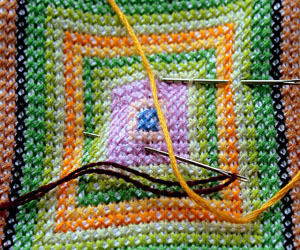 The Thread's Transformative Power: Thread, on the other hand, is a slender strand of material that comes in numerous forms, including cotton, silk, wool, and synthetic fibers. Its primary function is to connect, bind, and adorn. When combined with the needle, thread takes on the role of an artist's brush, creating intricate designs, securing seams, and adding decorative elements to fabrics. The choice of thread can dramatically impact the final outcome, from the sheen of silk to the durability of polyester.
The Thread's Transformative Power: Thread, on the other hand, is a slender strand of material that comes in numerous forms, including cotton, silk, wool, and synthetic fibers. Its primary function is to connect, bind, and adorn. When combined with the needle, thread takes on the role of an artist's brush, creating intricate designs, securing seams, and adding decorative elements to fabrics. The choice of thread can dramatically impact the final outcome, from the sheen of silk to the durability of polyester.
Sewing And Fabric Mending: At its core, the needle and thread serve the practical purpose of sewing and mending fabric. From fixing a torn hem to attaching buttons, these tools are essential for extending the lifespan of clothing and textiles. This ability to repair and restore not only saves money but also contributes to sustainable and eco-friendly practices by reducing waste.
Embroidery And Artistry: One of the most celebrated applications of the needle and thread is in the realm of embroidery. This art form involves the use of different stitches and thread colors to create intricate and beautiful designs on fabric. It has been used for centuries to embellish clothing, linens, and decorative items, adding a touch of elegance and personalization to everyday objects.
Cultural And Traditional Significance: Needlework, often passed down through generations, carries cultural and traditional significance in many societies. It can tell stories, showcase regional motifs, and connect individuals to their heritage. Each culture has its unique stitching techniques and designs, making the needle and thread a powerful tool for cultural preservation.
Crafted With Love And Sustainability
 Uniqueness And Personalization
Uniqueness And Personalization
DIY upcycled gifts are unique and personalized. Each creation is one-of-a-kind, reflecting the maker's individual style and the recipient's preferences. Whether it's upcycled jewelry, a hand-sewn bag, or repurposed decor, the inherent charm of these gifts is in their distinctiveness.
Endless Possibilities
The possibilities for DIY upcycled gifts are virtually limitless. Some popular ideas include turning vintage teacups into candles, transforming old windows into picture frames, crafting planters from used containers, and creating tote bags from discarded clothing. With a little imagination and resourcefulness, the sky's the limit.
Getting Started With DIY Upcycled Gifts
Gather Materials: Start by collecting the materials you'll need for your chosen project. This may involve hunting for discarded items, vintage finds, or materials you already have at home.
Choose The Right Project: Select a DIY project that aligns with the recipient's tastes and needs. Consider their hobbies, interests, and the occasion.
Learn Techniques: If you're new to upcycling, research and familiarize yourself with the necessary techniques for your chosen project. There are numerous online tutorials, books, and resources available.
Savoring The Subtle Pleasures
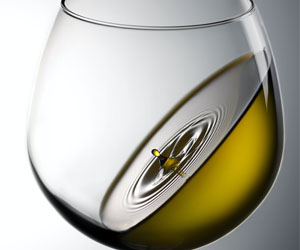 Smell: The olfactory sense is crucial in wine tasting. Swirl the wine gently in your glass to release its aromas and then take a moment to inhale. Note the wine's bouquet, identifying various scents like fruit, flowers, spices, or oak. The aroma can provide insights into the wine's age, origin, and quality.
Smell: The olfactory sense is crucial in wine tasting. Swirl the wine gently in your glass to release its aromas and then take a moment to inhale. Note the wine's bouquet, identifying various scents like fruit, flowers, spices, or oak. The aroma can provide insights into the wine's age, origin, and quality.
Taste: This is the heart of the wine tasting experience. Start with a small sip, allowing the wine to coat your palate. Assess the wine's flavors, acidity, sweetness, and tannins. Look for complex layers of taste, from the initial impression to the finish. Consider the balance and harmony of the wine's components.
Touch: The tactile sensation of wine is an often-overlooked aspect. Assess the wine's body or weight on the palate. Is it light, medium, or full-bodied? The texture should be smooth and pleasing, with the right level of astringency from tannins.
Sound: While it might not be as prominent, the sound of wine plays a role in the overall experience. When you slurp the wine, the sound can provide clues about its viscosity and body. Experienced tasters often make a slight slurping sound to aerate the wine as it passes through their palate.
The Art Of The Swirl And Sip: The gentle swirl of the wine in the glass releases its aromas, allowing you to take in the full bouquet. This practice aerates the wine, which can enhance the aromas and flavors.
Taking small sips and holding the wine in your mouth allows for a thorough evaluation of its taste and texture. The art of wine tasting involves paying attention to the wine's complexity, noting the interplay of fruit, acidity, and tannins.
The Art Of Terroir: Terroir, the unique combination of soil, climate, and geography of a specific wine region, is a fundamental concept in wine tasting.
A Journey To Wellness And Vitality
 Plant-Based Healing: Plants are a rich source of healing properties. Aloe vera, for instance, has been used for centuries to treat burns and skin irritations. Turmeric is renowned for its anti-inflammatory and antioxidant properties. Ginkgo biloba is used to enhance memory and cognitive function.
Plant-Based Healing: Plants are a rich source of healing properties. Aloe vera, for instance, has been used for centuries to treat burns and skin irritations. Turmeric is renowned for its anti-inflammatory and antioxidant properties. Ginkgo biloba is used to enhance memory and cognitive function.
Herbal Elixirs: Herbal remedies often take the form of teas, tinctures, or infusions. Herbs like chamomile and lavender are known for their calming effects, while Echinacea is a popular choice for boosting the immune system.
Essential Oils: Essential oils are highly concentrated extracts from plants and are used in aromatherapy and topical applications. Lavender oil promotes relaxation and sleep, while tea tree oil has potent antimicrobial properties.
Healing Crystals And Minerals: Crystals like amethyst, rose quartz, and citrine are believed to possess healing energies. They are often used in energy work and meditation to restore balance and harmony.

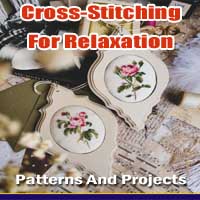




Creating Art From Earth
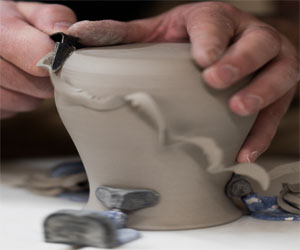 2. Stress Relief: Working with clay has a therapeutic effect. The tactile experience of manipulating the cool, moist material, combined with the meditative process of shaping, pinching, and molding, can help alleviate stress and promote mindfulness. As you immerse yourself in the creative process, daily concerns tend to fade away.
2. Stress Relief: Working with clay has a therapeutic effect. The tactile experience of manipulating the cool, moist material, combined with the meditative process of shaping, pinching, and molding, can help alleviate stress and promote mindfulness. As you immerse yourself in the creative process, daily concerns tend to fade away.
3. Sense Of Accomplishment: Completing a pottery project can be immensely rewarding. The tangible nature of the craft allows hobbyists to see the fruits of their labor take shape before their eyes. Whether it's the first pinch pot or a finely glazed vase, the sense of accomplishment is empowering and boosts self-esteem.
4. Functional And Decorative Items: Pottery offers a practical aspect as well. Hobbyists can create personalized, one-of-a-kind items for everyday use, such as plates, bowls, and utensils. These functional pieces can add a special touch to your home while showcasing your craftsmanship. Alternatively, pottery can be used to craft decorative items, making your living space uniquely beautiful.